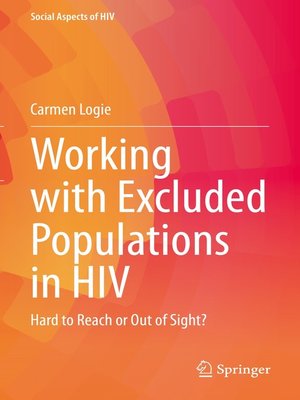Working with Excluded Populations in HIV
ebook ∣ Hard to Reach or Out of Sight? · Social Aspects of HIV
By Carmen Logie

Sign up to save your library
With an OverDrive account, you can save your favorite libraries for at-a-glance information about availability. Find out more about OverDrive accounts.
Find this title in Libby, the library reading app by OverDrive.



Search for a digital library with this title
Title found at these libraries:
| Library Name | Distance |
|---|---|
| Loading... |
This book, written decades into the HIV epidemic, reflects critically on the idea that the socially excluded populations often focused on in HIV research are in fact difficult to access and reach. The author broadly applies the concept 'hard to reach' to characterize populations that researchers find difficult to engage with. Social factors that produce marginalization and ultimately result in people choosing not to engage in research are not captured by the concept of 'hard to reach'. Limited attention has focused on how researchers can address the social factors that result in decisions to not engage in research. Disrupting the ways in which people are conceptualized as 'hard to reach' so as to refocus on transforming social systems and personal values, beliefs and approaches is understudied. This book uses case examples based on HIV research with Indigenous youth, internally displaced women, LGBTQ communities in the Global North and Global South, and persons at the intersection of these identities, to identify successful approaches to working with marginalized and often vulnerable communities and groups. The chapters signal the need for attention to five key social factors when developing successful approaches: context and storytelling; cultural humility; critical hope; imagination and possibility; and love, intimate inquiry, and the beloved community, if nations, individuals and communities are to address the epidemic in a sustainable and impactful way.







